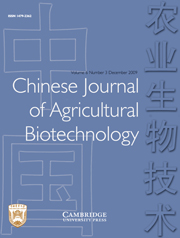No CrossRef data available.
Article contents
Genetic diversity analysis of Mystus guttatus from Xijiang Branch of Pearl River
Published online by Cambridge University Press: 02 August 2007
Abstract
The spotted longbarbel catfish (Mystus guttatus) is a member of the family Bagridae and is mainly distributed in the Pearl River Valley and Nandujiang River of Hainan Island. It is one of the four most famous fishes in the history of Pearl River Valley. Nowadays, M. guttatus has become a potential target for aquaculture in China due to its high nutritional value, but its genetic background is still unknown. This study was carried out to estimate its population genetic diversity in Pearl River. The random amplified polymorphic DNA (RAPD) technique was performed on 30 samples, using 20 random primers of length 10 nucleotides. The results showed that each primer amplified 3–9 bands per sample. Twenty primers produced 3210 well-amplified DNA fragments with reproducible band patterns and the average number of amplified DNA fragments reached 107 in each individual. Broadly speaking, 48 (44.9%) of 107 loci were polymorphic. Only the S30 primer did not produce polymorphic loci. The genetic distance of individuals ranged from 0.0467 to 0.2804. The average genetic distance among the 30 individuals was 0.1526±0.037. Genetic data in this study could be useful in genetic resource assessment as well as in wild population conservation and exploitation of M. guttatus in the future.
- Type
- Research Article
- Information
- Copyright
- Copyright © China Agricultural University and Cambridge University Press 2007
Footnotes
First published in Journal of Agricultural Biotechnology 2007, 15(1): 58–62


